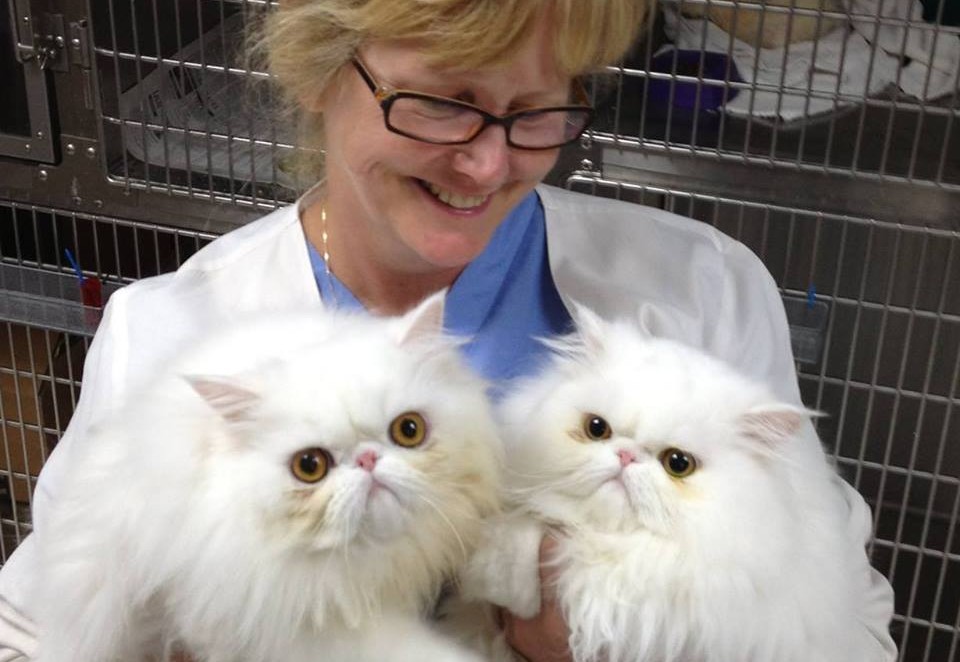 While there is a lot of information regarding the importance of good oral health, few pet owners regularly take the single most effective measure to prevent periodontal disease: toothbrushing. This is especially true with cats.
While there is a lot of information regarding the importance of good oral health, few pet owners regularly take the single most effective measure to prevent periodontal disease: toothbrushing. This is especially true with cats.
Importance of Oral Hygiene in Cats
Periodontal disease, if left untreated, is the single greatest cause of health problems in cats. Fortunately, it is completely preventable. Simply by keeping you pet’s teeth clean, you will be helping to provide him or her with a lifetime of general good health.
Preventing Tooth Loss
Oral hygiene is crucial for preventing tooth extractions. According to the American Veterinary Dental College, by the time periodontal disease becomes noticeable, it is often too late to save the affected teeth. This occurs because plaque and tartar can spread underneath your pet’s gum line, where it isn’t easily detected. Plaque releases bacteria, which slowly but steadily destroys the soft tissues and bone which protect your pet’s teeth and hold them in place.
Health Complications
Dental bacteria, if left untreated, can eventually spread to other organs, causing heart, lung and kidney disease, which may significantly shorten your cat’s lifespan. Bone disease and a fractured jawbone are another risk factor because plaque can weaken and wear away the bones around the mouth. Oral cavities can also spread to your pet’s nose, causing a nasal discharge.
Quality of Life
Periodontal disease is the most common disease among small animal patients. Not only does it create localized infection, but it also has been linked to numerous severe diseases of primary body organs, including the heart, liver and kidneys. As a result, the prevention of periodontal disease is considered a medical issue, as its ramifications extend far beyond lost teeth. To ensure a long, healthy life for you cat, preventative dental care is essential.
Periodontal Disease Happens Over Time and is Preventable
This disease is a result of a sequence of events that have been going on in your cat’s mouth since the day she got her first tooth. If bacterial plaque is not removed, it begins to build up on the teeth soon, the plaque mineralizes to tartar. When the tartar and plaque start to accumulate, it can cause inflammation of the gums (gingivitis). Although gingivitis is treatable, it quickly turns into periodontal disease, which is irreversible. Over time, gums start to recede and eventually the attachments holding the tooth in place are weakened, and the tooth becomes loose.
Prevention
Because most cats have some form of gum disease by the time they are 3 or 4 years old, annual check-ups are essentail for maintaining good oral hygiene. An oral examination will be conducted by your vet and, if necessary, scale and polish your cat’s teeth to remove plaque and tartar.
Toothbrushing
Cleaning your pet’s teeth with a small toothbrush and toothpaste or gel formulated for cats also helps to prevent dental disease. While the process of disease development can take several years to complete, it is still reversible in the early stages. One of the best ways to prevent disease is to keep plaque and tartar from building up. Brushing your cat’s teeth needs to be done several times a week for the process to be effective, according to the American Veterinary Dental College. But, rare is the cat who loves having his or her teeth brushed, and rare is the owner who is willing to comply with this often difficult task.
Alternative to Toothbrushing
There are many alternatives to brushing to help maintain good oral health in your cat. As suggested by research, a coarsely textured diet can act as a natural cleaning agent on your pet’s teeth as he or she eats. Much like cats in the wild, who chew and tear their prey, your cat can derive a similar benefit from his or her diet to help reduce tartar and plaque buildup on his or her teeth. In this manner, dental exercisers and chew toys can also assist in reducing plaque.
Symptoms of Oral Disease
The most common symptoms of oral disease in cats are:
- Bad breath
- Yellow or brown deposits on the teeth at the edges of the gums
- Red gum edges
- Receding gums and loose teeth
- Drooling saliva
- Lack of appetite
- Mouth pain (pawing at the mouth or rubbing the side of the mouth along the ground)
- Difficulty in chewing food
- Inability to close the mouth















